Pop-up bookshelves in the Tannery Hoose Windae – just about all the books I bought in 2021. What a lot of great reading I’ve had during that terrible year.
On the day I took the photo of the pop-up bookshelves, I’d left the three books I was currently reading in the house. So, a special mention for The Poison Glen by Annmarie Ní Churreáin, Luckenbooth by Jenni Fagan and Queen of Infinite Space by Ruth Aylett. All excellent and still on the go.
Colmcille/Columba 1500
A load of the books on the pop-up bookshelves relate to a project I undertook with The Song House in County Donegal. The Irish poet, Annemarie Ní Churreáin and I worked with Sineád and Candy from the Song House to develop three poetry workshops around the life and influence of Colmcille, known in Scotland as Columba, whose 1500th anniversary of birth was in 2021. This Irish prince, poet and preacher was a warrior in his homeland and a church-planter when he travelled to what is now Argyll. He likely started off in Dunaverty in Kintyre before sailing to Iona some time later. Iona is the place we in Scotland associate with Colmcille/Columba most and he is seen as peacemaker now. Annemarie and I ran the three workshops on-line in the autumn of 2021 and had participants from Ireland, Scotland and Spain. Many of the participants recorded the poems they wrote from there and these will be featured on the Song House website from the end of January 2022. I learned a lot about Colmcille/Columba from many excellent poems of Kenneth Steven and Elizabeth Rimmer and from fantastic biographies by Brian Lacey and Ian Bradley.
poetry
I’d a load of wonderful poetry books to read in 2021. Too many to mention them all, but I was excited by Seahorse Publications’ Wanderlust Women, the launch of which I was honoured to chair at Avant Garde in Glasgow before all the Covid cerry oan kicked in again (features: Linda Jackson, Lesley Benzie, Tracey Patrick and Donna Campbell). Among other highlights were Victoria McNulty (Exiles), Aoife Lyall (Mother, Nature), John Bolland (Pibroch) and Des Dillon, whose Muscle work, Alcohol and Blame is a tour de force, both in poetry and visual art.
The 21st anniversary edition of Magi Gibson’s Wild Women of a Certain Age was a treat to see.
The death of Billy Bonar was a great loss to Scottish Poetry. His last collection, The Stuff of the Earth, is stunning. A prize has been initiated in his name, run jointly by his publisher, Red Squirrel Press, and St. Mungo’s Mirrorball, of which he was co-founder. The first William Bonar Prize will be awarded in February 2022.
Fiction
It was a great year for fiction. I was honoured to have work in Postbox Magazine: Issue 5, Scotland’s international short story magazine. I was doubly honoured to feature on the cover.
I would draw your attention to the novels Wildgoose, by Sally Evans, and No Harm Done, by A J Liddle. Sally’s book is a stunning story that covers many decades of two fictional and other real and fictional poets’ lives. It’s a beauty and will blow your mind. Al Liddle’s debut novel in his Georgia-based Ramaz Donadze series of crime thrillers won him a place on the shortlist for the Bloody Scotland Debut Prize in 2021. An accolade indeed for a very fine read.
I also loved Des Dillon’s Pignut and Nuncle, a fascinating, dark delve into the fantastical meeting of Jane Eyre, King Lear and The Fool; Alan Bissett’s amazing novella, Lazy Susan (from the same Speculative Books stable as Victoria McNulty’s Exiles) and Moira McPartlin’s Before Now: Memoir of a Toerag, a funny, poignant and deeply human story set in the heart and tongue of Fife. I savoured Bernard MacLaverty’s superb short stories in Blank Pages over many weeks, one of these books you read more slowly as you get towards the last story to scrape the last tasty morsel possible.
Non fiction
The absolute top non-fiction book of the year for me was the memoir by George Szirtes of his mother: The Photographer at Sixteen. This is a book you could read again and again, such is its depth of historical significance and poetic and literary strength. First published in 2019, it won the James Tait Black Memorial Prize.
Your own ideas for the pop-up shelves
The shelves might have survived the weather since I put them up. Why not be next in the Tannery Hoose Windae? Check out how to take part here.











